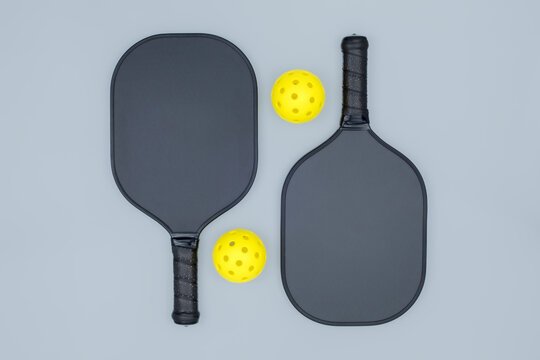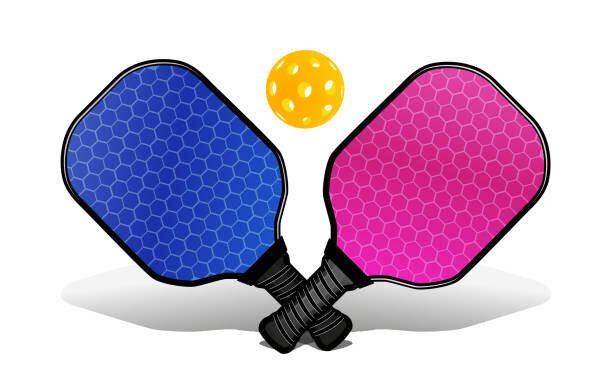
Pickleball has become a widely popular sport worldwide, appealing to people of all ages and skill levels due to its fun and active nature. Pickleball is combines elements of tennis, badminton, and ping pong. To play pickleball you need a paddle, it looks similar to a ping pong paddle but slightly larger.
If you want to try this pickleball sport, you can buy a pickleball paddle with prices ranging from $20 to $100. But if you just want to have fun with this sport, in this article, we will guide you, how to make a pickleball paddle in 4 steps which could be a cheaper solution.
So, let’s dive in and discover the joy of creating your very own pickleball paddle.
Can You Make a Pickleball Paddle Out of Wood?
Absolutely! You can definitely make a pickleball paddle out of wood to press budget, and it can be a fun and rewarding DIY project. Wood is a material that is very easy to get anywhere and easy to make into various shapes. In addition, wood also has strong and durable properties so it is suitable to be used as a bat or paddle.
While wood paddles aren’t the mainstream choice for competitive play due to their weight and performance limitations compared to composite materials, they can be a fantastic option for casual play, beginners, or even as unique custom paddles.
How to Make Pickleball Paddle
Preparation, make a design, cutting, and finishing are 4 step to make pickleball paddle.
Pickleball paddle is the most important tool when you want to start this sport. Because this game is played by hitting the ball over the net similar to tennis. Pickleball requires eye-hand coordination and good reflexes.
To increase comfort while playing, we should use a pickleball paddle that matches our needs. There is a wide range of pickleball paddles sold in online markets or sports stores. But this time we will make our own pickleball paddle.
Here’s the breakdown on making your own pickleball paddle in 4 steps
1. Preparation and Select Material
To make a pickleball paddle, you’ll need a few essential materials. The first item on your list is wood. Select a high-quality plywood or hardwood like maple, birch, or ash. These materials are known for their durability and strength, making them perfect for a pickleball paddle.
Next, gather the necessary tools such as a jigsaw, sandpaper, wood glue, and a drill. You may also need a pencil, ruler, and your desired grip material, such as cushioned tape or grip wrap. Once you have all your materials at hand, you’re ready to move on to the next step.
2. Make a Design for Pickleball Paddle
Take a moment to consider the design of your pickleball paddle. Although the standard dimensions are usually 15.5 – 17 inches long and 7 – 8.25 inches wide, you can make slight adjustments according to your comfort and preference. There are various pickleball paddle design models on the internet and you can check out some for reference.
Using a pencil and ruler you can draw the shape of the paddle you want on the wood, such as making a rounded rectangle. Don’t forget to include the handle for proper grip. If you have access to a computer, you can even design a template using various software programs to ensure its accuracy and symmetry. And if the design is set, you can move on to the next step.
3. Cutting
Use your carpentry skills as you cut out the paddle shape according to the pattern you designed in step 2. Use a jigsaw to cut around the outline and trim the edges as necessary. Make sure your cuts are clean and precise. Be careful when you are using tools, it is advisable to use safety equipment in this step.
When you’re done cutting, use sandpaper to smooth the surface of the paddle. Start with coarse sandpaper and gradually move on to finer sandpaper to get a smooth finish. Make sure to sand both sides of the paddle evenly and round off the edges for a comfortable feel.
4. Finishing
Now it’s time to add the finishing touches to your homemade pickleball paddle. Start by drilling holes in the surface of the paddle, as this allows air to pass through and reduces wind resistance during play. The standard pattern is a grid of small holes, but you can create your own design if you want to make it unique.
To complete your paddle, attach your desired grip material to the handle, to ensure a secure and comfortable grip during play. You can use wood glue or tape for this purpose, depending on the material you choose.
Double check your pickleball paddle to ensure that it has met your expectations. Make adjustments if necessary, and voila! You now have your own unique handmade paddle that you can use to play pickleball with friends or family.
Can You 3D Print a Pickleball Paddle?
It is not yet common to create a complete pickleball paddle using only 3D printing, but this technology is playing an increasingly important role in pickleball paddle design and customization.
While creating a whole pickleball paddle with 3D printing is not recommended, we can still open up new frontiers for pickleball paddles with 3D printing. You can make various modifications to your paddle to make it more comfortable and improve your playing performance.
Some of the parts that you can modify include the handle, paddle core, and paddle face. You can find some references on the internet that suit your needs.
Can I Paint My Pickleball Paddle?

Of course you can give your paddle a color. If you make your paddle with wood you can color it with wood paint according to your preference. To make the color more durable, you can use film-forming paint. By coloring your paddle you can make it more personal and can improve performance because you are more confident using your paddle.
How Can I Make My Pickleball Paddle Better?
To make your pickleball paddle feel better this two things that you must consider before make your own pickleball paddle
1. Material Selection:
Wood: Affordable, easy to work with, and offering a classic feel, but heavier and less durable than composite materials. Choose hardwoods such as maple, birch, and oak.
Composites: lighter, stronger, and offer higher performance potential, but can be more expensive and require specialized tooling. Consider carbon fiber, fiberglass, or epoxy.
3D printing: opens up endless customization possibilities, but is still in its infancy when it comes to complete paddles. Materials and printing techniques should be chosen carefully.
2. Design and Performance:
Paddle Shape: The standard round shape is a good starting point, however you can also experiment with other shapes to achieve unique performance and aesthetics.
Handle Design: Consider ergonomics, comfort, and grip preferences. For further customization, check out our removable or adjustable handles.
Paddle Weight: Light steering increases maneuverability, heavy steering increases power. Follow the Pickerball rule to find a comfortable weight.
Surface Texture: Smooth surfaces for control, textured surfaces for rotation. Experiment with different smoothnesses to find your sweet spot.
Conclusion
Embarking on the journey of making your own Pickerball paddle can be a rewarding and cost-effective endeavor. While store-bought paddles range in price from $20 to $100, you can still show your uniqueness by making your own using wood, which is affordable and easy to work with.
The construction process involves selecting the wood, using tools such as jigsaws and drills, and assembling the template for precision. Once your paddle is complete, you can further customize it by adding finishes such as painting, staining, or tape to create a functional, unique, and stylish pickle paddle.
Comment below if you’ve another ask about pickleball!

